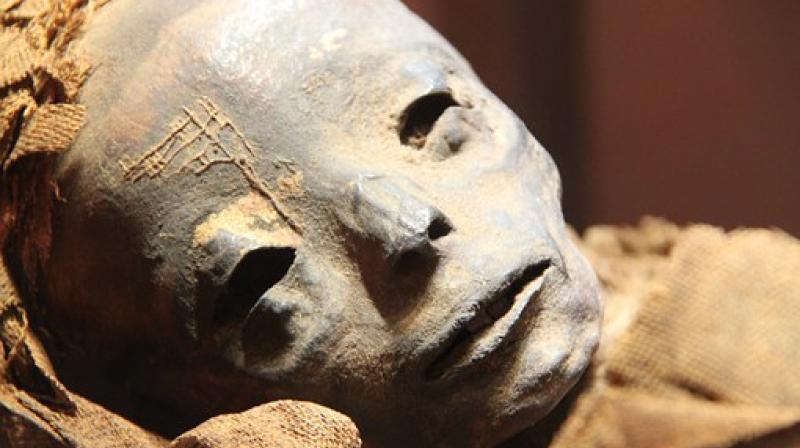LONDON: The famous ‘Two Brothers’ mummies dating to around 1800 BC have different fathers and are actually half-brothers, scientists have found using ‘next generation’ DNA sequencing.
The Two Brothers are the oldest and among the best-known human remains in the Egyptology collection at the Manchester Museum in the UK.
They are said to belong to two elite men – Khnum-nakht and Nakht-ankh.
However, ever since their discovery in 1907 there has been some debate among Egyptologists whether the two were actually related at all.
The pair’s joint burial site, dubbed The Tomb of The Two Brothers, was discovered at Deir Rifeh, a village 402 kilometres south of Cairo.
Hieroglyphic inscriptions on the coffins indicated that both men were the sons of an unnamed local governor and had mothers with the same name, Khnum-aa. It was then the men became known as the Two Brothers.
When the complete contents of the tomb were shipped to Manchester in 1908 and the mummies of both men were unwrapped by the Egyptologist Margaret Murray.
Her team concluded that the skeletal morphologies were quite different, suggesting an absence of family relationship.
Based on contemporary inscriptional evidence, it was proposed that one of the Brothers was adopted.
In 2015, the DNA was extracted from the teeth and, following hybridisation capture of the mitochondrial and Y chromosome fractions, sequenced by a next generation method.
Analysis showed that both Nakht-Ankh and Khnum-Nakht belonged to mitochondrial haplotype M1a1, suggesting a maternal relationship.
The Y chromosome sequences were less complete but showed variations between the two mummies, indicating that Nakht-Ankh and Khnum-Nakht had different fathers, and were thus very likely to have been half-brothers.
The study, which appears in the Journal of Archaeological Science, is the first to successfully use the typing of both mitochondrial and Y chromosomal DNA in Egyptian mummies. (AGENCIES)
Trending Now
E-Paper


